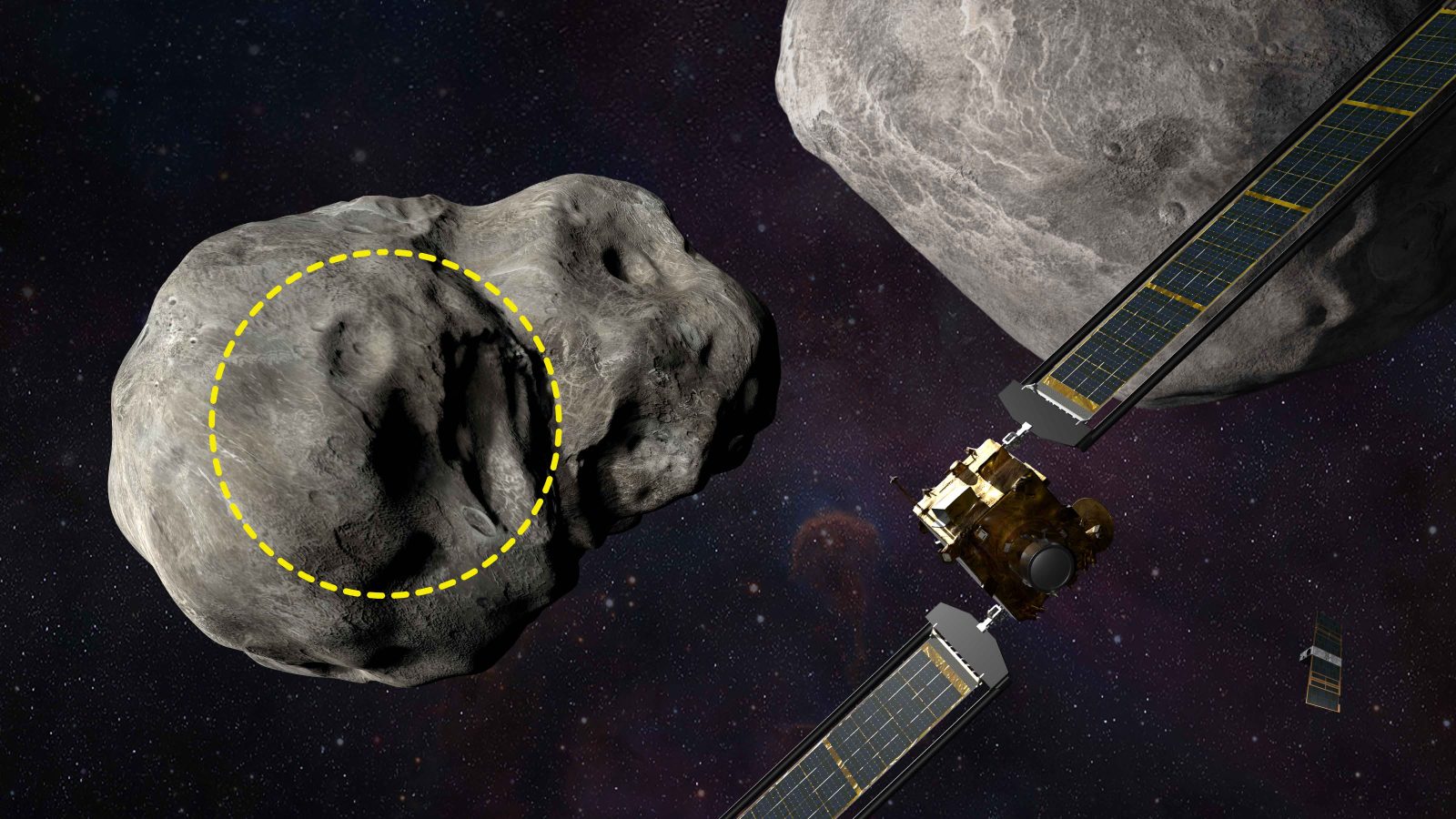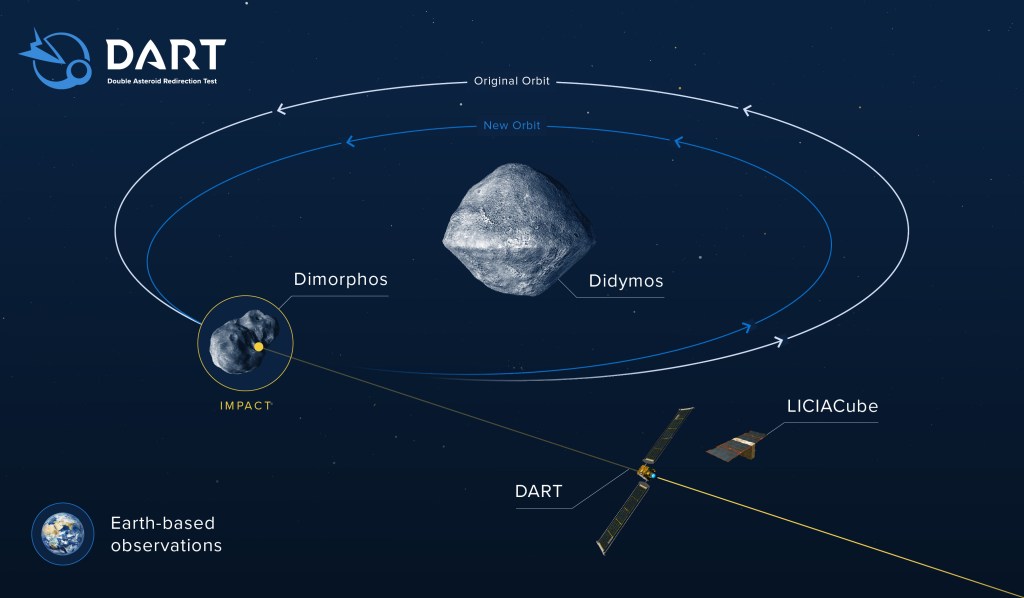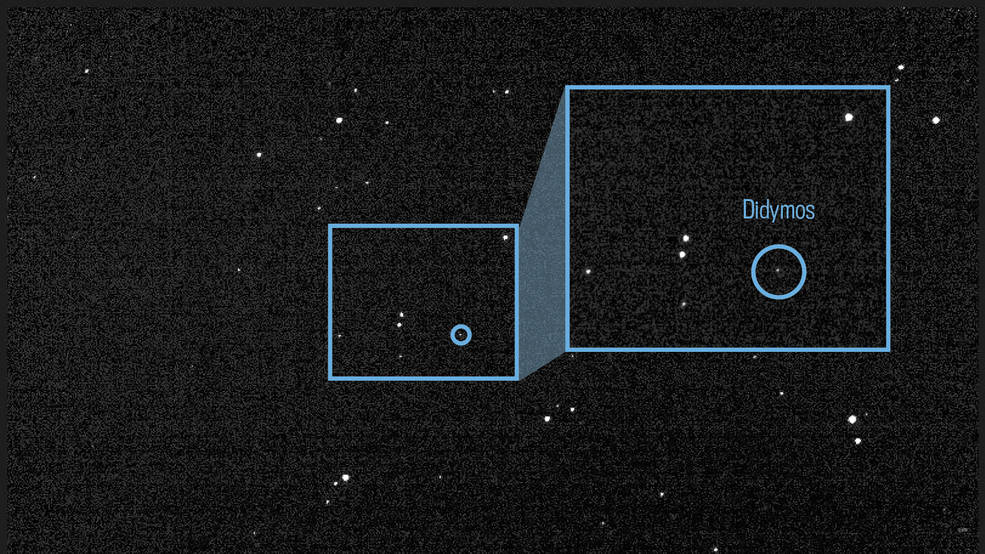
In what could be straight out of a sci-fi film, NASA is gearing up to deliberately crash a spacecraft into a moonlet of a near-Earth asteroid in an attempt to change its motion and, ultimately, direction through space. Read on as I break down how this could not only be NASA’s but humanity’s most crucial experiment yet.
Update: On September 27, 2022, DART successfully crashed into Dimorphos, bringing an end to its mission, but hopefully making a permanent change to its target.
According to NASA, the Double Asteroid Redirection Test, or DART, “is the first-ever mission dedicated to investigating and demonstrating one method of asteroid deflection by changing an asteroid’s motion in space through kinetic impact.”
Since its launch in November of last year, the spacecraft has spent just over 9 months catching up to its target. A moonlet called Dimorphos of the asteroid Didymos located approximately 6.8 million miles from Earth.
“While the asteroid poses no threat to Earth, this is the world’s first test of the kinetic impact technique, using a spacecraft to deflect an asteroid for planetary defense,” states NASA.

Credit: Johns Hopkins University Applied Physics Laboratory
This week the space agency released an image from the DRACO model of the spacecraft, where the camera used for optical navigation is housed. In the image, you can make out the asteroid and its target moonlet, Dimorphos, as just little white dots. Nonetheless, it shows that DART’s crucial onboard cameras are still operational.

“It is important to show that DRACO is working properly and can see its target to make any adjustments needed before we begin using the images to guide the spacecraft into the asteroid autonomously,” said Elena Adams, the DART mission systems engineer at the Johns Hopkins Applied Physics Laboratory (APL) in Maryland.
On September 26, DART will impact the moonlet Dimorphos at about 6.6km/s (14,768 mph) to change its orbit within the Didymos binary asteroid system. But why not send the spacecraft hurtling toward the large asteroid itself? Well, a few reasons. Scientists predict that by crashing into the smaller moonlet, and not the larger asteroid Didymos, they can more significantly change its orbit through the gravitational pull that the moonlet has. The slightest change in the moonlet’s orbiting motion will offset the Didymos’ path.
“The extent of the deflection caused by the crash will be easier to detect as astronomers have been carefully observing its path around the bigger asteroid,” says Jay Tate, the director of the National Near Earth Objects Information Centre in Knighton, Powys.
Why is DART so important?
The threat of asteroids to Earth is small but real. This mission will be crucial in collecting data to help determine if intentionally crashing a spacecraft into an asteroid is an effective way to change its course through space. If only dinosaurs had a space program.
FTC: We use income earning auto affiliate links. More.




Comments